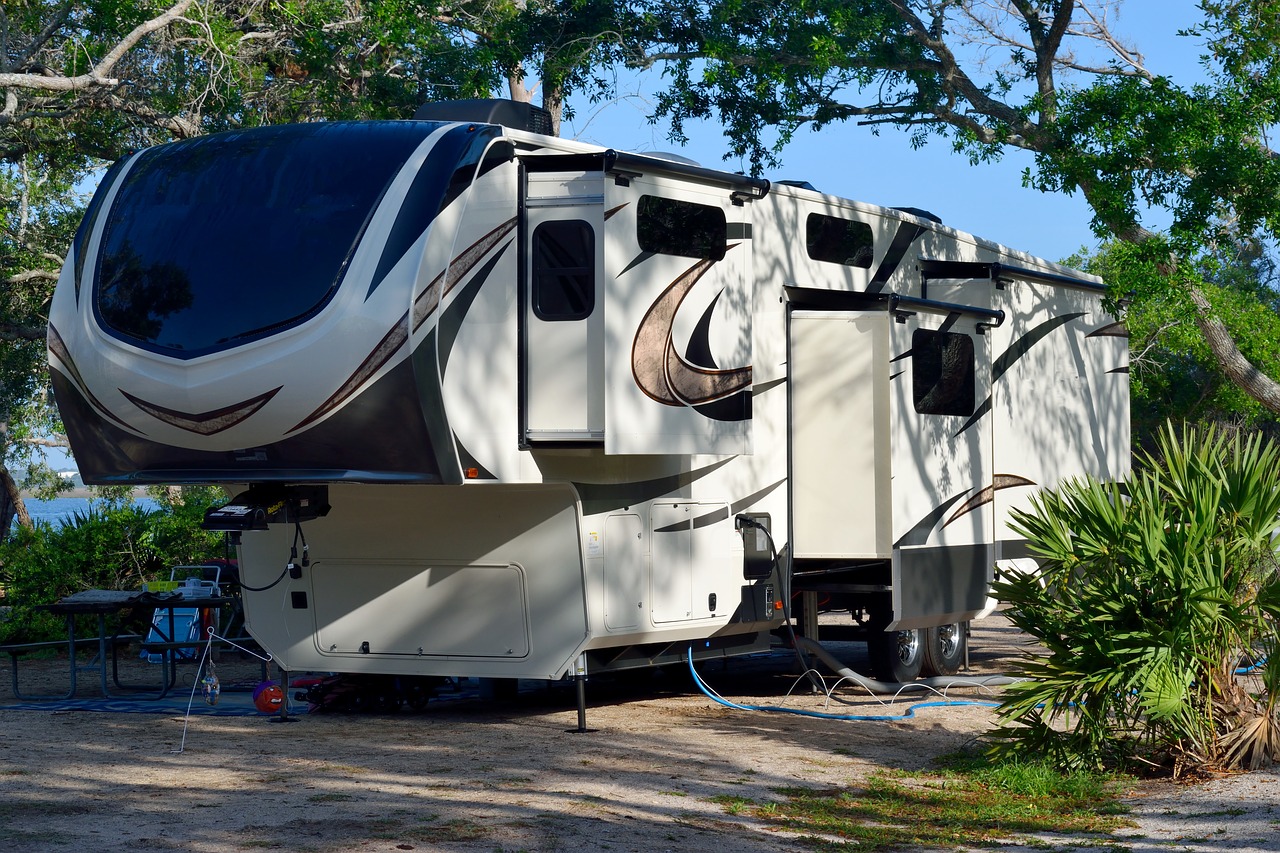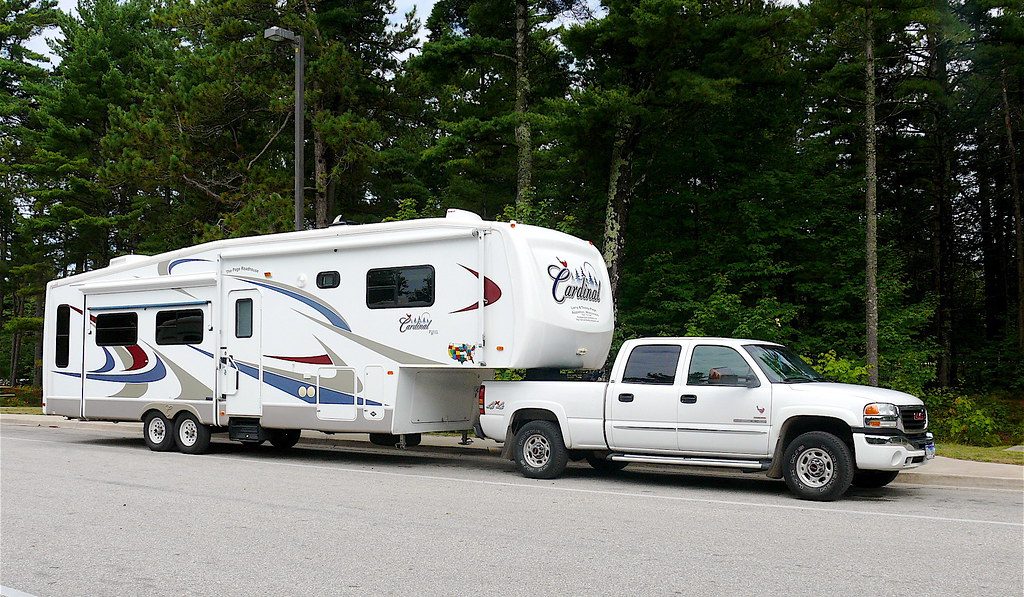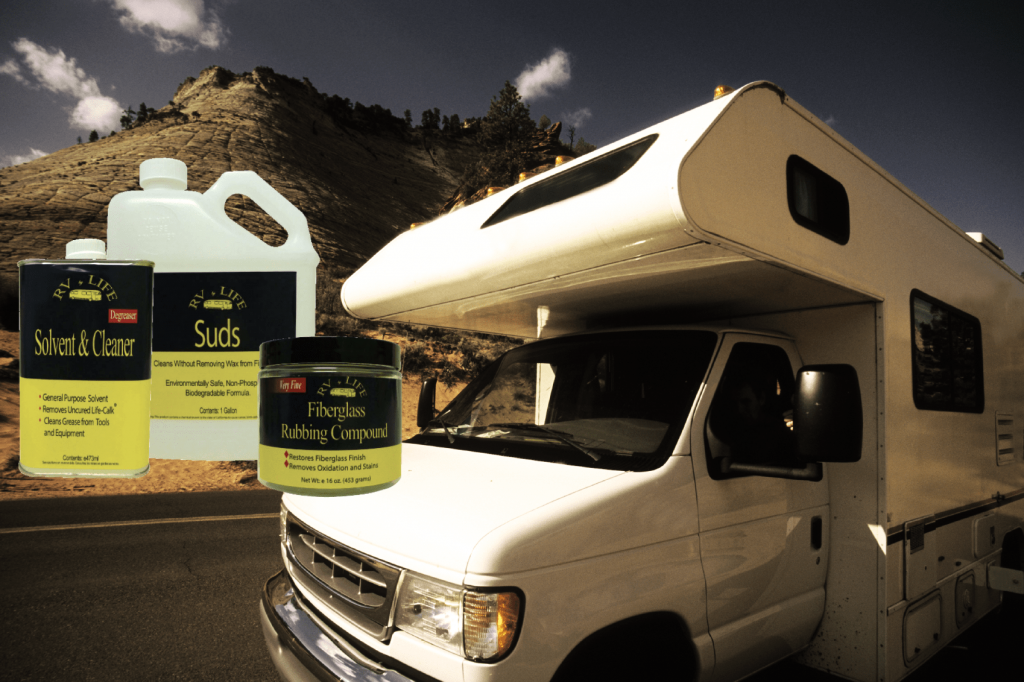
When you tow a fifth wheel camper the first time, it can seem a bit intimidating. You don’t have any experience with driving “big rigs” like this, and they never focused on this during your driver’s license test. But if you stick to our tips and follow the proper steps, you’ll be on your way to getting your fifth wheel where it needs to go.
What is a Fifth Wheel Rig?
Fifth-wheel coupling refers to a semi-trailer connection to a towed unit—in this case, a camper. Its signature is the raised forward section, which can rise over the back end of the truck. But this element adds an additional layer of complexity. In addition to considering your left and right turns, you never want the trailer to go too far up or down.
Get the Weights Right

The first thing you need to do is match your truck to the trailer and ensure you never exceed the weight limit. There are a few weights you need to know here: the weight of your empty trailer and the vehicle’s weight once it’s connected to the truck.
Your manufacturer will usually give you the weight of your empty trailer, so check their website or your owner’s manual to double-check. You can always seek out the use of an industrial scale if you need to be absolutely sure.
Connecting the Fifth Wheel Hitch
Hitching a fifth wheel camper to an appropriately-sized truck isn’t as simple as a traditional tow. However, once you have the rear hitch mounted, you’ll find that it’s easy to use. That’s after installation.
Installation begins by making sure that you’ve matched the power of your truck to the appropriate weight in the trailer. If you have a trailer that’s large enough to warrant a hitch mounted on the bed of your truck, you’ll need to make sure you have a truck with enough power to handle it—usually a three-quarter ton truck.
With the right size (as well as enough room in the bed to accommodate a fifth wheel camper as it turns over the end of your truck), you’ll be ready for installation.
Seek out your manufacturer’s guidelines for the right size hitch. One-size-fits-all hitches can work, but the name can be a bit deceiving. You may have to do some extra work with the hitch to ensure a proper fit. It’s better to get the right fit directly from the manufacturer. Install the hitch as per the instructions.
Towing Your Fifth Wheel Camper
Now comes the truly scary part: moving that big camper around. If you’ve done all your measuring properly, you’ll have a camper of the right weight, fixed to a truck that can handle it. Note that the overhang of the camper shouldn’t be so close that it threatens to bump your truck when you turn.
- Check connections. Make sure the “jaws” of your hitch are locked shut before embarking and that the kingpin fits cleanly into the hitch receiver’s cradle. There should be a clear, unmistakable click.
- Connect breakaway. Connect the emergency breakaway line to the hitch. This gives the hitch added braking power.
- Raise jacks. Raise the trailer jacks so that the trailer is now on the support of your truck.
- Get moving. Ease out onto the road, preferably to an empty parking lot where you can now practice towing.
Make sure that you make note of your eye lines and your blind spots. Practice backing up until you’re comfortable with it.
Caring For Your Camper

When you take care of your camper, your camper will take care of you. Consider investing in RV cleaning and maintenance products from RV by LIFE to keep your camper in the best shape possible.

